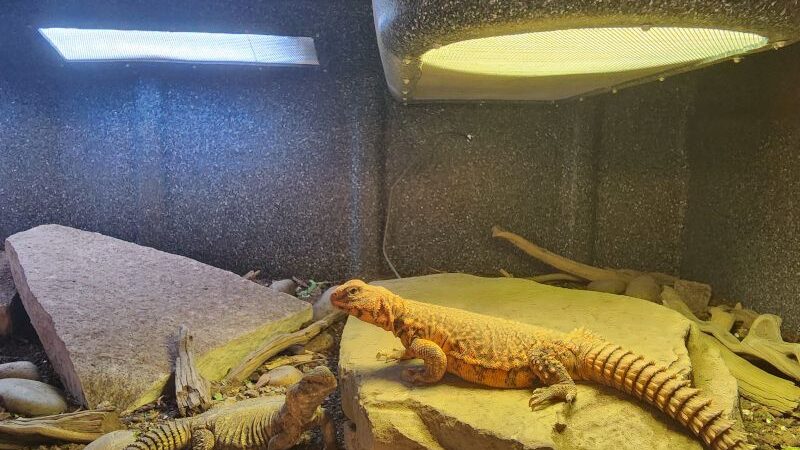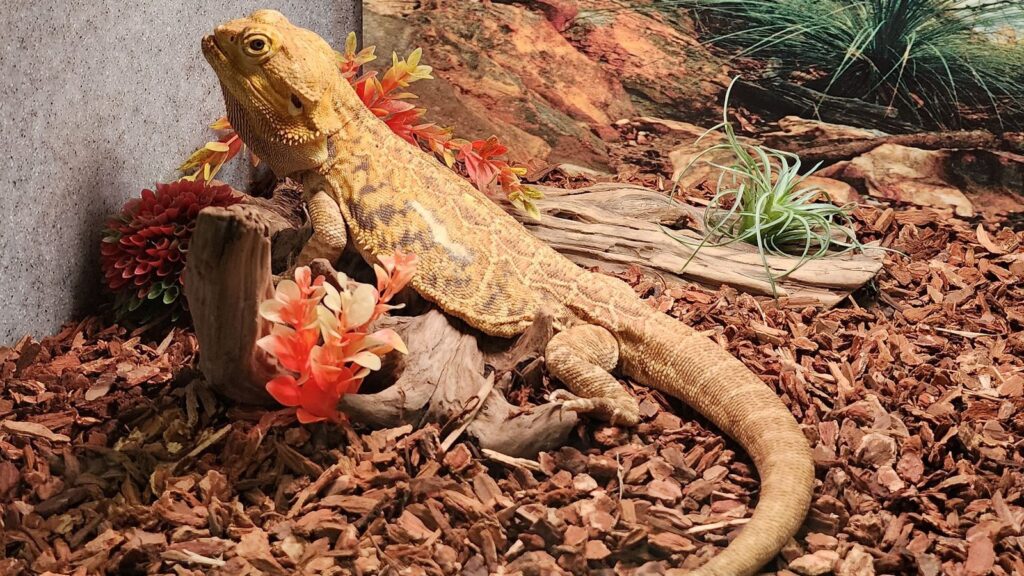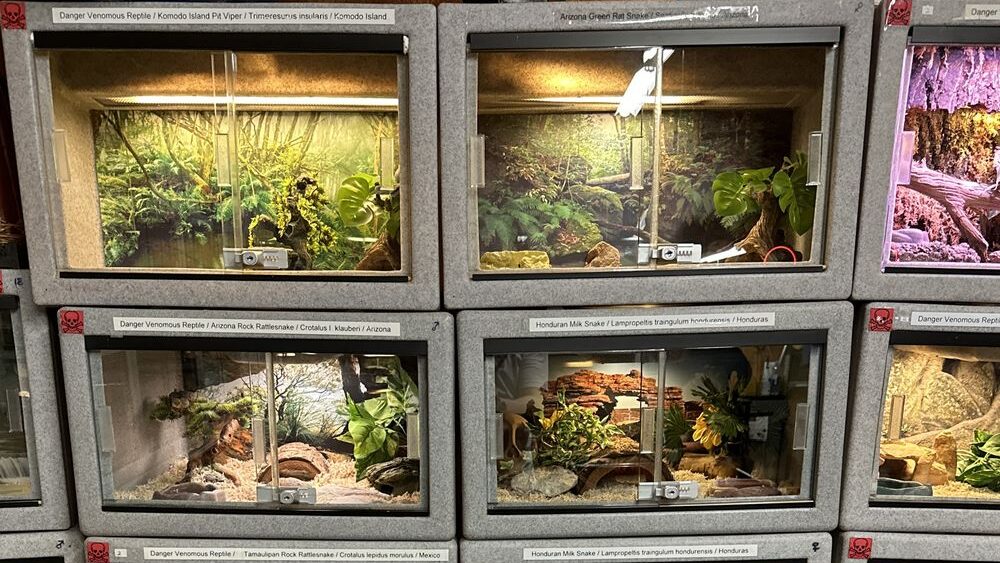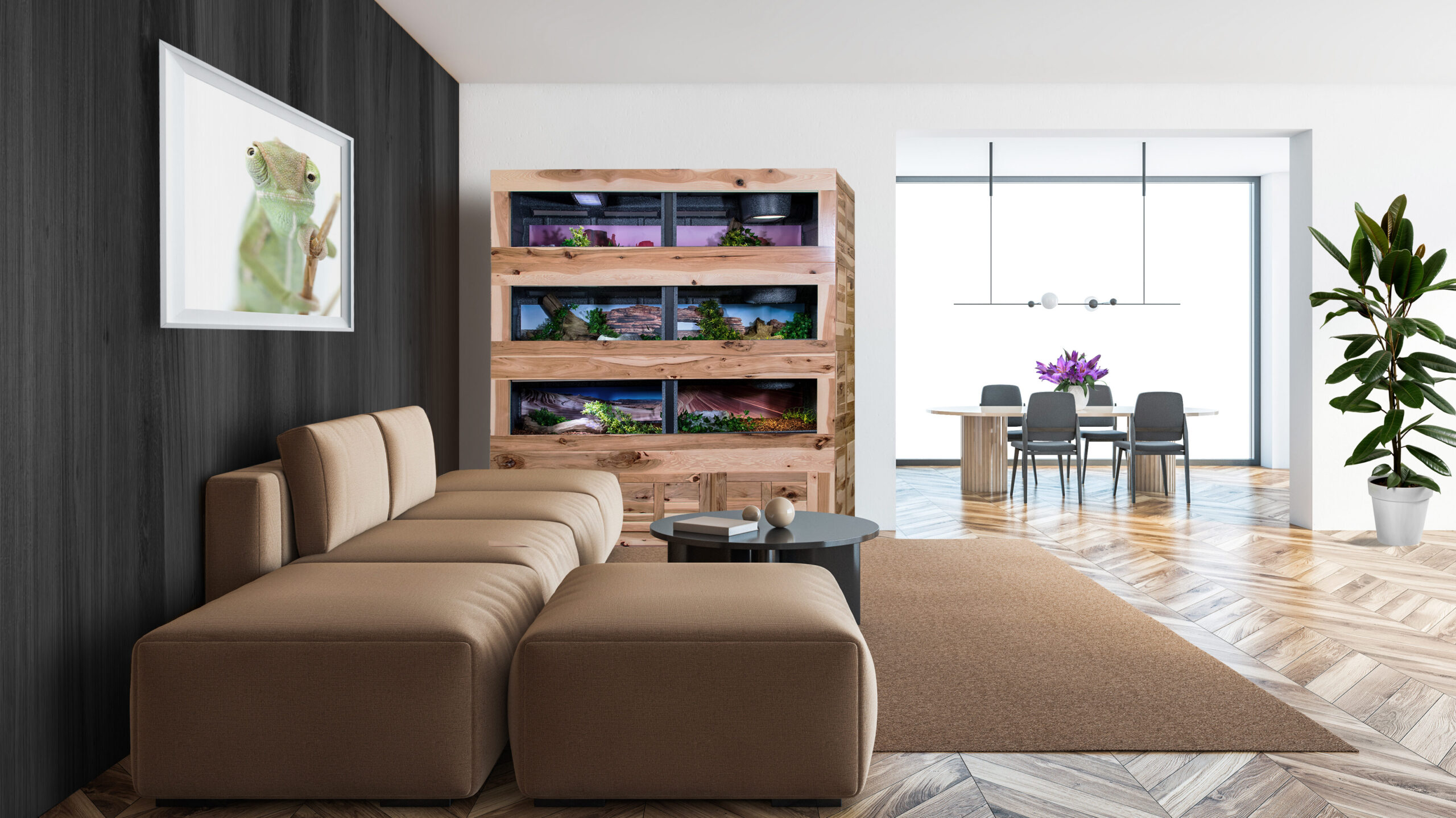Estimated Reading Time: 6 minutes
Reptiles are fascinating creatures that require specific care to thrive in captivity.
One significant aspect of their well-being is providing appropriate lighting conditions in their enclosure.
And when it comes to reptile lighting, two terms often come to mind: UVA and UVB.
In this blog post, we will explore the importance of UVA and UVB lighting for reptiles and discuss the differences between them.
The Importance of UV Light for Reptiles

In the wild, many reptiles spend hours of their day basking in the UV rays from the sun.
Since they’re cold-blooded, they need an external heat source to regulate their body temperature, but warmth isn’t the only benefit.
Reptiles need these UV wavelengths for a few reasons:
- To regulate normal activities
- So their bodies can produce Vitamin D3
- So they can effectively absorb calcium from the food they eat.
If your reptile lives indoors, how do you give it the UV rays it needs?
And what happens if your pet doesn’t receive enough light?
We’ll explain further in this post.
Understanding UVA Light

UVA lighting refers to the Ultraviolet A spectrum, which is essential for reptiles’ overall health and behavior.
Some essential benefits of UVA light for reptiles include:
- UVA (Ultraviolet A) light helps reptiles perceive their environment by enhancing their vision and color perception.
- Reptiles exposed to UVA light exhibit more natural behaviors, such as basking, hunting, and interacting with their surroundings.
- UVA light in an enclosure mimics a day and night schedule, maintaining their natural circadian rhythm, promoting regular sleep patterns, and regulating activity levels
- UVA light also influences reptiles’ mood and reproductive behaviors.
Understanding UVB Light

UVB lighting, on the other hand, encompasses the ultraviolet B spectrum.
Unlike UVA, UVB light is invisible to the human eye.
But UVB for reptiles serves a more important purpose than visible light: It’s responsible for the synthesis of vitamin D3 in reptiles’ skin.
- UVB (Ultraviolet B) light is crucial for reptiles’ metabolic processes. It enables them to synthesize vitamin D3 in their skin, which is essential for calcium absorption.
- Proper calcium absorption is vital for maintaining strong bones, proper muscle function, and overall health.
- Without sufficient UVB exposure, reptiles are at risk of developing metabolic bone disease (MBD), a debilitating condition that can lead to deformities and even death
How To Give My Reptile Adequate UVA and UVB Light
Many reptile enthusiasts keep their pets indoors, and while providing a controlled environment is advantageous, it also means they won’t receive enough UVA and UVB rays naturally.
So how do you give your reptile enough light?
Artificial Reptile Lighting Fixtures

Artificial light is the best way to provide the UVA and UVB light rays your reptile needs.
You can quickly and cost-effectively install artificial lighting in their enclosures.
Just remember that not all reptile light fixtures are built the same.
Make sure you find a fixture with full-spectrum lighting, which emits both UVA and UVB rays.
On top of this, you should add another UVA-emitting fixture that provides more light and warmth to an enclosure during the day.
Here is a list of the light and heat fixtures that we offer through our sister company, Custom Cages:
- Zoo Med 24″ Full Spectrum Replacement Bulb (UVA/UVB)
- Zoo Med 18″ Full Spectrum Replacement Bulb (UVA/UVB)
- Fluorescent Strip Fixture with Full Spectrum Light (UVA/UVB)
- Zoo Med Full Spectrum Screw in Bulb (UVA/UVB)
- Zoo Med Full Spectrum Screw in Heat Lamp (UVA/UVB)
- Zoo Med Basking Spot Lamp (UVA)
- Zoo Med Halogen Spot Lamp (UVA)
- Zoo Med Ceramic Heat Emitter (Heat Only)
Natural Sunlight

If sunlight produces the necessary UVA and UVB light for reptiles, why not just position the cage in front of the window?
The problem with natural sunlight shining through the glass of an enclosure is that UVB rays are blocked by the glass.
So while your pet may feel the warmth and experience a day/night schedule, the rays necessary for their physical health will be lacking.
Natural sunlight will work well if your reptile is in an outdoor enclosure.
However, outdoor enclosures can be tricky, as most reptiles require specific climate conditions, which are much harder to predict than in a controlled environment.
How Much Light Does My Reptile Need?

Not all reptiles are built the same, so the required UV intake will vary from species to species.
The amount of light that a reptile receives in a day (or the duration of light in a day) is referred to as a photoperiod.
Reptiles get this naturally in the wild, so you need to mimic their day/night schedule as closely as possible.
For many reptiles, 12-hour photoperiods are recommended, but you should research your pet’s specific needs to be sure.
Whatever the duration, you can make this task simple by using a reptile light with a timer.
Simply set the timer to 12 hours on and 12 hours off (depending on the species), and your work is done!
Conclusion
Reptile lighting, specifically UVA and UVB light, play distinct and significant roles in your pet’s physical and behavioral health.
To review: UVA lighting regulates reptiles’ daily activities and stimulates the production of vitamin D3, while UVB lighting aids in the synthesis of this essential vitamin and promotes calcium absorption.
Remember, when setting up your reptile enclosure, it is crucial to invest in high-quality UVA and UVB bulbs that emit the appropriate spectrum of light.
If you’re unsure about the lighting requirements for your pet, reach out to our experts at Vision Products!
We’re happy to provide any information you need to give your pet a long, happy, and healthy life.
